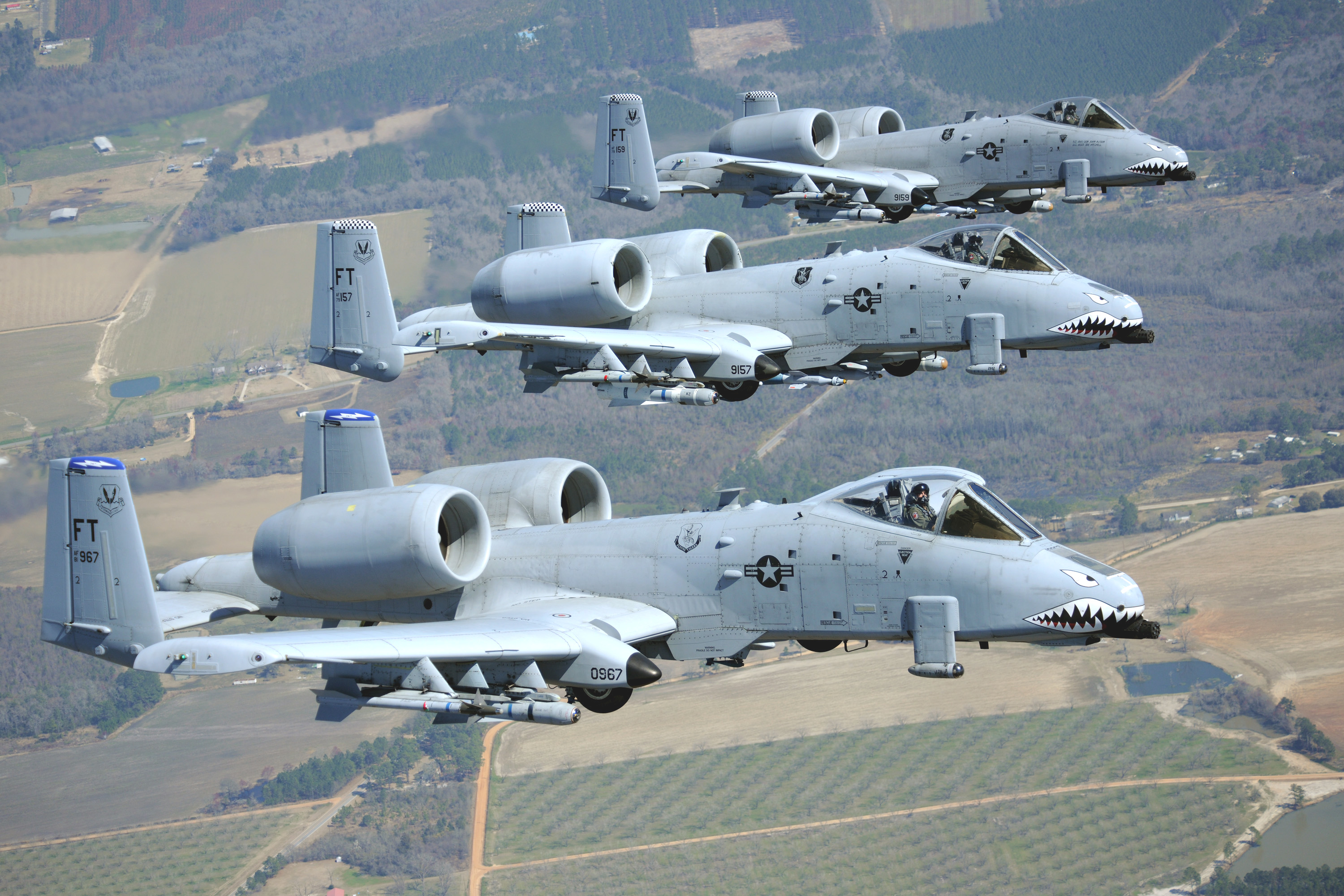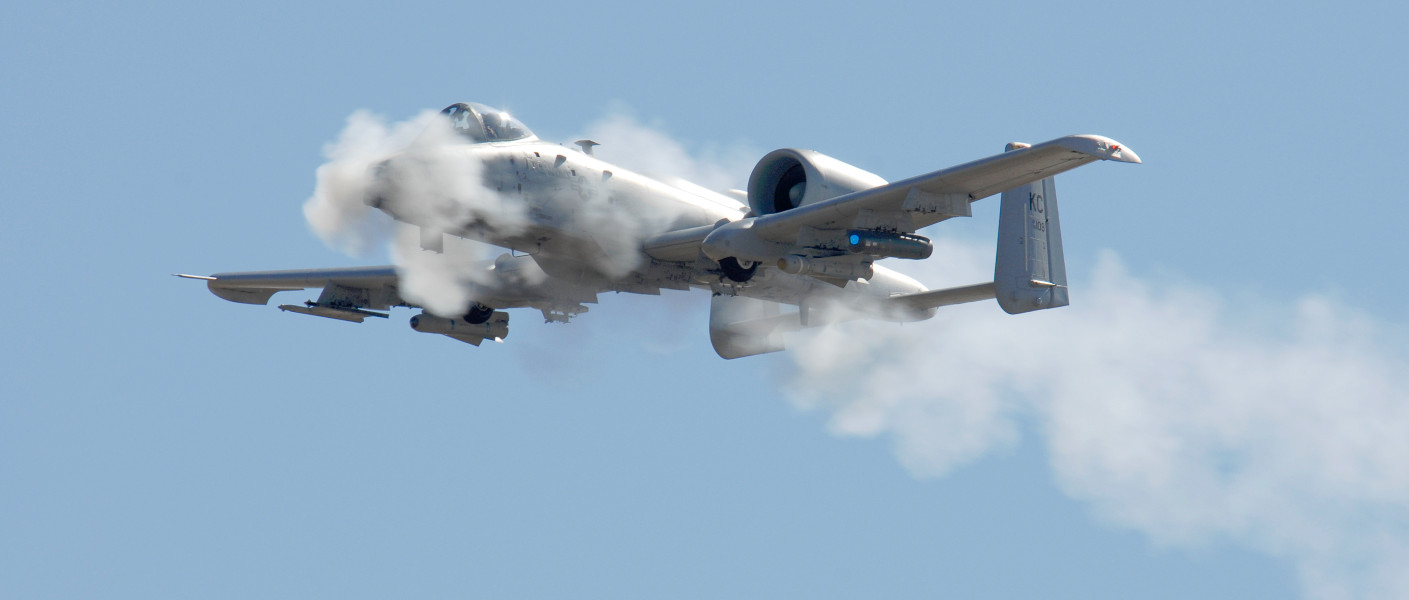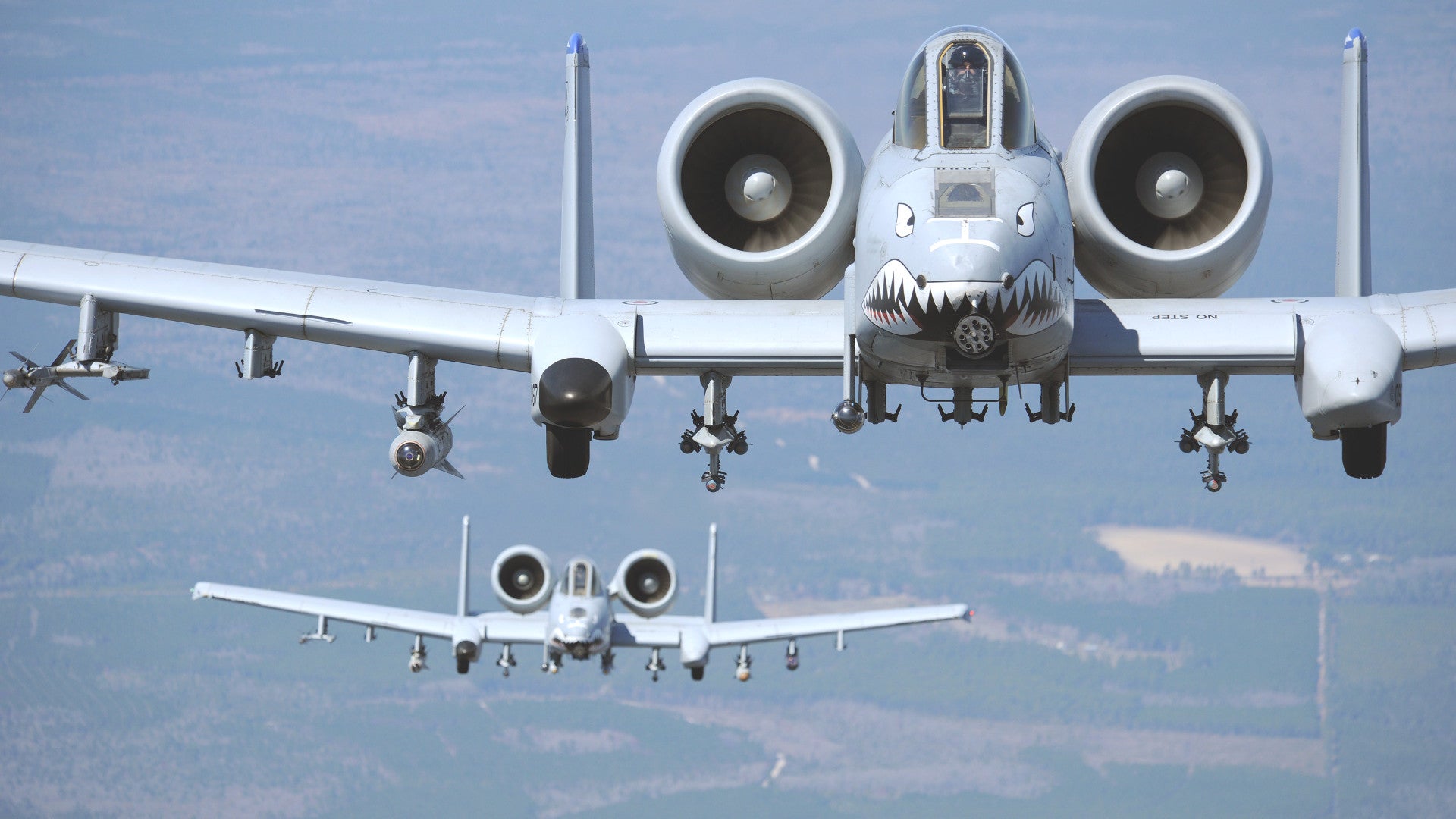As Congress moves forward crafting the next annual defense budget, the House of Representatives looks set to add more than 100 million more to continue the desperately needed re-winging program for the U.S. Air Force’s A-10 Warthog ground attack jets. However, it’s not clear whether the proposals will include additional language compelling the service to maintain the size of the fleet overall.
On June 26, 2017, the House Armed Services Committee released Chairman Mac Thornberry’s mark of the proposed Fiscal Year 2018 National Defense Authorization Bill. The proposed plan adds $103 million for an unspecified “unfunded requirement” for the A-10s. However, this is an identical figure to the one the Air Force said it needed for more Warthog replacement wings in its so-called “unfunded priorities list,” a wish list it sends to Congress every year, which the service released earlier in June 2017.
It’s not clear what this amount pays for exactly. When Boeing won a previous contract to re-wing the A-10s, it reportedly cost less than $10 million per aircraft. According to the Air Force’s unfunded requirements document, this infusion of money is enough to pay for an initial batch of four sets of wings. This suggests most of the funds will actually go to rebooting the production of the spans to begin with. The Air Force has said it will hold a competition to select who will built the components, rather than just giving the new work to Boeing again, according to Defense News. There’s no indication of when the work would actually start.
Still, “their wings don’t all run out of service life at the same time, it depends on the individual airplane,” Air Force General Mike Holmes, head of head of Air Combat Command, the service’s top warfighting command, had told Defense News on June 8, 2017. “We have the money in the unfunded list to get another contract for wings and to get a batch that would help us work through a period and give us time to buy more wings for the rest of the fleet if we are unable to go forward to drop down to six squadrons.”

Aircraft that have already received the wings now have enough estimated flight hours to stay airworthy through at least 2040, which is good considering the near constant demand for the low- and slow-flying planes. As of 2017, the Air Force had more than 280 A-10s across nine “combat-coded” squadrons in both its active component and the Air National Guard. The venerable jets were actively flying combat missions in Iraq and Syria against ISIS, as well as standing guard on the Korean Peninsula. In recent years, the iconic ground attackers had deployed to various locations in Europe to deter Russian aggression, as well as the Philippines for training exercises that pointedly challenged Chinese claims in the South China Sea.
But while Congress’ plans to add more money might keep the re-wing project alive, it doesn’t necessarily put a stop to any new Air Force shenanigans. As we at The War Zone have reported many times before, the Air Force has a long and complicated relationship with the aircraft and has repeatedly attempted to retire it, even in the face of opposition from Congress and elsewhere within the U.S. military. When the service released a detailed outline of its latest budget request in May 2017, it stated that the A-10 fleet was “fully funded” for at least five more years.
What it didn’t spell out was plans to cut three full squadrons by 2030, a process that would likely begin years earlier. This emerged at House Armed Services Committee Hearing on June 7, 2017, where Air Force Lieutenant General Jerry Harris, the Deputy Chief of Staff for Strategic Plans and Requirements, and Air Force Lieutenant General Arnold Bunch, the service’s top uniformed acquisition officer, discussed the overall budget proposal.
“It’s the first time you’ve publicly said that you are going to go down to six squadrons,” Representative Martha McSally, an Arizona Republican and former Warthog pilot, said after hearing these comments. “I’d really like to know what those planning assumptions are of the six squadrons.”

Even with the additional re-wing funds, it’s important to note that if money does indeed only covers wings on four aircraft, there are dozens of aircraft still in need of the new spans to continue safe flying. In addition, this doesn’t take into account the need for other upgrades to make sure the aircraft can continue to talk and share data with other aircraft and ground forces, as well as make the jets themselves more survivable.
In late 2016, the Air Force had to shift money around in order to add the V12 Lightweight Airborne Recovery System (LARS)/Combat Survivor Evader Locator (CSEL) to less than 20 aircraft headed to Iraq and Syria. The system lets the pilots better communicate with downed aircrew, pararescue personnel, and joint terminal air controllers, as well as providing their GPS coordinates to help prevent friendly fire incidents. “If funding is not received, time to locate/recover downed personnel could increase, along with increased risk of injury, death, or hostage situations,” the Air Force declared in its request to Congress to reappropriate the necessary funds.
A separate request in 2016 asked for additional funding for improvements to the Warthog’s self-protection and electronic warfare equipment, a project that had first started in the 2014 fiscal year. “Currently, the A-10 aircraft is incapable of using self-protection flares and chaff while landing gear is down during take-offs and landings due to the lack of an effective weight on wheels indicator,” the Air Force explained. “Additionally, Electronic Counter Measure (ECM) pods are not currently connected to the Electronic Warfare (EW) Multiplex (MUX); therefore, the A-10 aircraft is lacking critical EW capability. If additional funds are not provided, aircraft and pilot survivability are threatened.”

Beyond that, there is no indication that any re-wing program will fundamentally change the Air Force’s existing plans as it remains committed to replacing the A-10 with the F-35 Joint Strike Fighter. Congress has not been swayed by this argument in the past, including language in annual defense spending bills halting any changes to the Warthog fleet until the service has proven it has a viable alternative to the jet’s as yet unmatched ability to provide close air support to troops on the ground.
In January 2017, Air Force Brigadier General Scott Pleus, the head of the service’s F-35 Program Integration Office, said a planned fly-off between the Warthog and the Joint Strike Fighter could begin as early as 2018. At the same time, the Air Force is pushing ahead with an experimental light attack aircraft test, commonly referred to as OA-X. There is no clear indication how the results of either of these evaluations will impact the service’s future force structure and there is no money available yet to buy any OA-X aircraft.
With legislators like McSally on the House Armed services Committee, it seems almost a given that the final fiscal year 2018 national defense authorization act will again include steps the Air Force needs to take before it can send any A-10s to the Boneyard for good. But, especially given the Air Force’s historical attitude, the bigger issue will likely be the general condition of the remaining Warthogs in the meantime.
Contact the author: joe@thedrive.com
